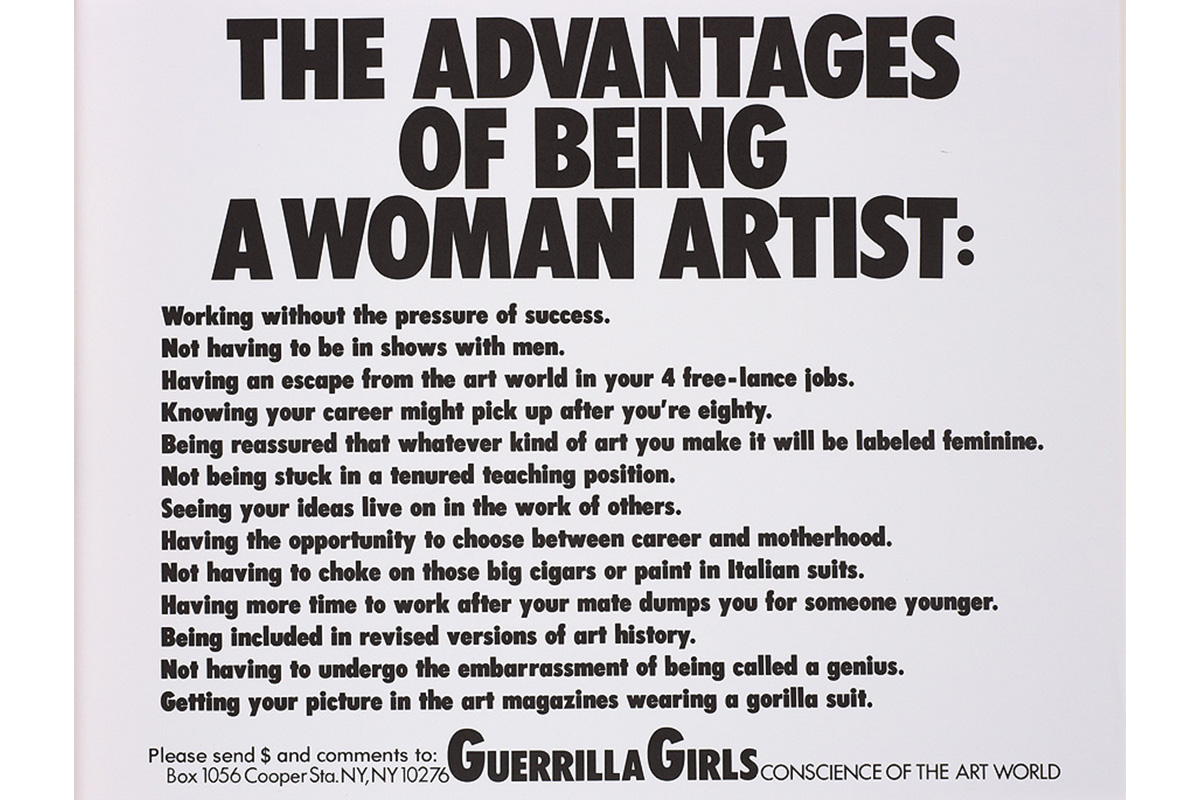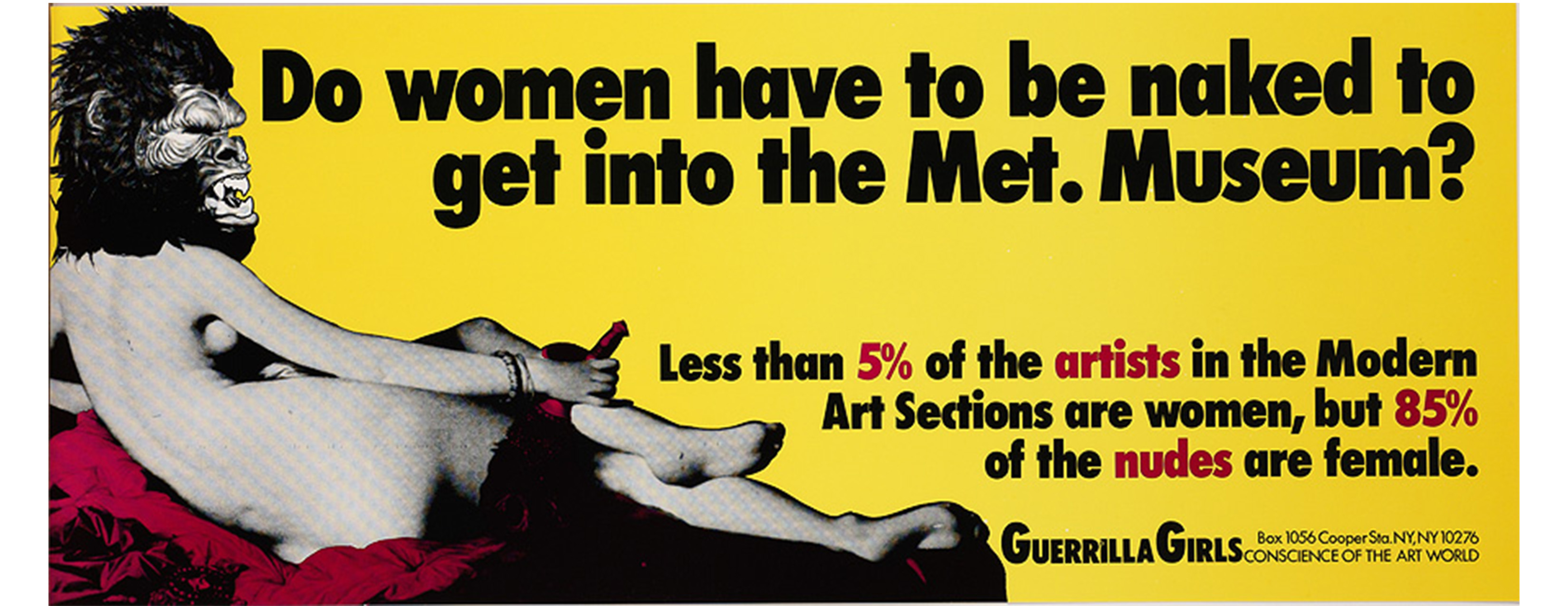
Fighting Injustice on a Cultural Front
Anna Weston is a Smith College student, class of 2017, and worked at the Cunningham Center this summer.
This fall, the Smith College Museum of Art is showing an exhibition of second wave feminist artists, among them a group of artists known as Guerrilla Girls. Formed in the early 1980’s, the group consists of anonymous women who wear gorilla masks, a choice that manages to feel both clandestine and brash, to protect their identity (they are artists and do their own work outside of Guerrilla Girls) as well as a device to keep attention away from their personal lives and instead centered on their message and their work. Each woman goes by a pseudonym, paying homage to earlier female artists such as Kathe Kollwitz and Frida Kahlo, managing to weld the past to the present all while attempting to change the future. Such a disguise seems cohesive with their art which aims to criticize and hold accountable an art world rife with racism, sexism and tokenization.

Guerrilla Girls. American, 20th century. The Advantages of Being a Woman Artist, from Guerrilla Girls, Most Wanted 1985 - 2006, 1988. Lithograph printed in black on paper. Purchased with the gift of the Fred Bergfors and Margaret Sandberg Foundation. SC 2006.44.5.
Much of Guerrilla Girls' art was protest art in the form of poster campaigns in New York City, with particular focus on SoHo and the East Village, where many of the art galleries were located. This piece sarcastically exposes the complex struggle of just existing as a woman artist as well as the near impossibility of making a traditionally successful living.
As I was pulling these works for the upcoming show, I was particularly struck by the seeming disconnect between the artwork’s message and its form. The art itself manifests as ephemera (posters, flyers, handouts), much like the zines that would later be associated with second wave punk musician/ feminist Kathleen Hanna. Despite the form however, the Guerrilla Girls make sure their work is snarky and audacious, not hesitating to name names or hand out blame, speaking uncomfortable truths that ultimately lent the art a kind of cultural staying power. Thus perhaps what I had first perceived as disconnected is in fact entirely coherent.

Guerrilla Girls. American, 20th century. Do women have to be naked to get into the Met. Museum? from Guerrilla Girls, Most Wanted 1985 – 2006, 1989. Photolithograph printed in color on paper. Purchased with the gift of the Fred Bergfors and Margaret Sandberg Foundation. SC 2006.44.7.
The latest statistics update on the disproportionate amount of work displayed by female artists vs the amount of female bodies on display. The image is a parody of Grande Odalisque, Jean Auguste Dominique Ingres’ famous depiction of a concubine. Paired with the gorilla mask the concubine/female body becomes less of a commodity, less complacent and more active in dictating how women are represented. Several older versions of this poster exist documenting how little these numbers have changed.
Perhaps finding such a rich history here, in ephemera, is not so strange. Perhaps it is only logical that these marginalized histories and their critiques exist in works that were first posted on the streets instead of preserved in a museum. Art that was entrusted to the masses instead of a gallery. Art that is audacious, even insolent in order to be heard. Guerilla Girls and their work reject an art world that had never bothered to include them in the first place.